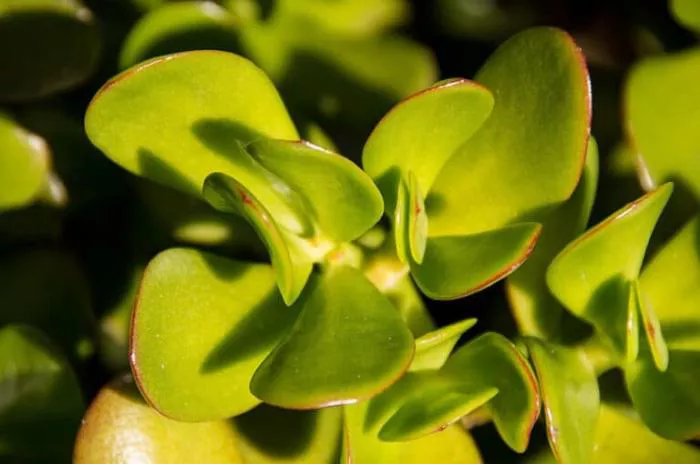Crassula is a genus of succulent plants that are popular among gardeners and houseplant enthusiasts. Known for their thick, fleshy leaves and unique shapes, these plants can bring a touch of beauty to any space. Many people wonder about the growth rate of Crassula and how to care for them. In this article, we will explore the growth habits of Crassula plants, their ideal conditions, and tips for fostering healthy growth.
Understanding Crassula
Crassula consists of over 200 species, including the well-known Crassula ovata, commonly called jade plant. These plants are native to Africa and thrive in arid environments. Their unique adaptations allow them to store water in their leaves, which helps them survive in low-water conditions.
The growth rate of Crassula varies by species and environmental factors. Generally, these plants are considered slow to moderate growers. Under ideal conditions, Crassula can grow several inches per year.
Growth Rate Factors
Several factors influence the growth rate of Crassula. These include light, water, temperature, and soil type. Understanding these factors will help you create the best conditions for your plant.
Light
Light is crucial for the growth of Crassula. These plants prefer bright, indirect sunlight. Inadequate light can slow down their growth.
If your Crassula is not getting enough light, you may notice it becoming leggy or stretching towards the light source. Conversely, too much direct sunlight can scorch the leaves. A balance is essential for healthy growth.
Water
Watering is another vital factor. Crassula are succulents, meaning they require less water than other plants. Overwatering can lead to root rot, which can hinder growth.
It is best to let the soil dry out completely between waterings. During the growing season, typically spring and summer, you may need to water your Crassula more frequently. In fall and winter, reduce watering as the plant enters a dormant phase.
Temperature
Crassula prefers warmer temperatures. They thrive in temperatures between 60°F and 80°F (15°C to 27°C).
Extreme cold can damage the plant and slow its growth. If you live in a colder climate, it is best to bring your Crassula indoors during winter months.
Soil Type
The soil type is essential for healthy growth. Crassula prefers well-draining soil. A cactus or succulent mix works well.
If you are making your own mix, combine potting soil with sand or perlite to improve drainage. Good drainage prevents water from pooling around the roots, which can lead to rot.
Propagation and Growth
Crassula can be propagated easily, contributing to their growth. There are several methods for propagating Crassula, including leaf cuttings and offsets.
Leaf Cuttings
To propagate Crassula using leaf cuttings, choose a healthy leaf and gently twist it off the stem. Allow the leaf to dry for a day or two to form a callus.
Once the callus has formed, place the leaf on well-draining soil. Water sparingly until roots develop. This process can take a few weeks to a couple of months, depending on conditions.
Offsets
Many Crassula species produce offsets, or small plantlets, at their base. These can be removed and planted separately.
Simply dig up the offset, ensuring some roots are attached. Plant it in well-draining soil and water lightly. Offsets generally establish quickly and begin growing rapidly.
Seasonal Growth Patterns
Crassula plants have distinct seasonal growth patterns. They typically grow most actively in the spring and summer months. During this time, you may notice new leaves and even flowers in some species.
In contrast, Crassula enters a dormant phase in fall and winter. During this time, growth slows significantly. It is important to adjust your care routine during these months. Reduce watering and avoid fertilizing, as the plant needs less attention during dormancy.
Fertilizing Crassula
Fertilizing can enhance growth but should be done carefully. Use a diluted, balanced fertilizer during the growing season.
Apply fertilizer every four to six weeks from spring to early fall. Avoid fertilizing during the dormant season, as this can stress the plant.
Common Issues Affecting Growth
Several common issues can affect the growth of Crassula. Identifying these problems early can help ensure your plant remains healthy.
Pests
Pests such as mealybugs and aphids can damage Crassula. Check the leaves regularly for signs of infestation. If you notice pests, treat the plant with insecticidal soap or neem oil.
Disease
Fungal diseases can occur, especially if the plant is overwatered. Signs of disease include yellowing leaves or a mushy stem. If you suspect disease, reduce watering and improve air circulation around the plant.
Conclusion
In conclusion, the growth rate of Crassula can vary, but with proper care, these plants can thrive. Providing adequate light, water, temperature, and soil type is essential for promoting healthy growth.
By understanding the growth habits and needs of Crassula, you can enjoy these beautiful succulents in your home or garden. With patience and care, your Crassula can flourish, bringing joy and beauty for years to come.
Whether you choose to propagate your plants or enjoy them as they are, Crassula offers a wonderful way to connect with nature. Remember to monitor your plant and adjust care as needed to ensure the best growth possible.
Related topics:


